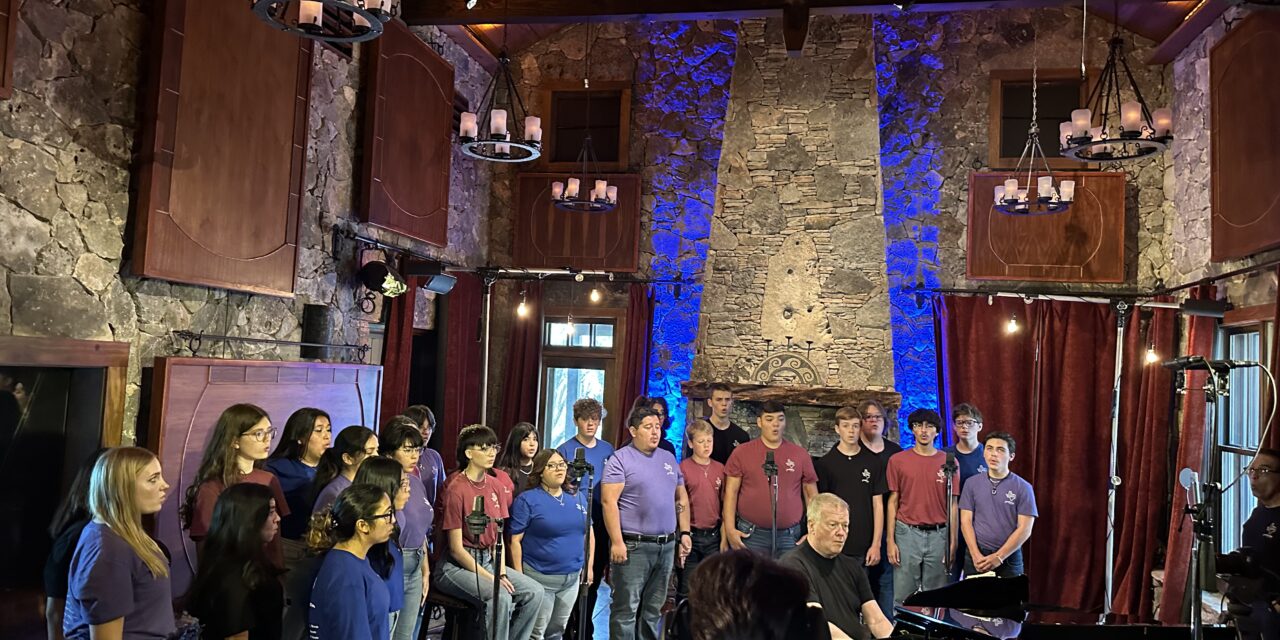Constructing Successful Student Choirs for the Second Quarter of the 21st Century
Part One – Daunting
Part Two – Beyond Mere Possibility
Part Three – Listening
Part Four – Leading
Part Five – Following
Part Six – Courage vs. Shyness
Part Seven – Collaborating
Part Eight – Goodbye to Me First
Part Nine – Choral Music … Much More Than Singing
Part Ten – Revealing Riches and Building Lives
LEADING
In previous installments of this series, we have noted the exceedingly high level of organization required to build a billion-dollar freeway. As the construction moves forward, provisions are made — adjusting daily — to allow hundreds of thousands of vehicles to move safely and efficiently through the maze of construction.
The immediate previous chapter was about “listening.” After all, if construction specialists and hourly laborers fail to listen to instructions, heed the coordinated schedules, or respond to the complex engineering requirements, it is absolutely guaranteed that mayhem will ensue.
I submit that listening is the most critical skill required for building a freeway. Take it a step further; it is not only being still long enough to “sit through” the explanation of plans, but it also requires hearing the communication and then taking action accordingly. The most talented construction crew in the world is going to fail at their tasks if they do not correctly hear the very specific plans, protocols, processes, and priorities.
At YouthCUE, we have often stated that, in order to be the best kind of leader we can be, we first need to have been successful as a good follower. A leader who has not learned big lessons while following others’ leads is likely the kind of “leader” who comes across as an overbearing boss or even a bully. Being at the top of a particular food chain does not a real leader make. Another way to say it is … it is relatively easy to boss people around and to set in motion a chain of command which receives no feedback. It requires quite another internal software package — and produces much more valuable leadership skills — to understand how to build goodwill and collaborative consensus and to move the group forward without strong-arming, intimidating, or threatening.
Wait. I thought we were talking about building freeways, not working with people.
When one observes the utterly epic activity of this construction zone the way I view it on my commutes every day, you begin to realize that the top and middle management of this behemoth project simply must be world-class communicators, listeners, hearers, leaders. They must make huge and tiny adjustments requiring enormous and daily — sometimes hourly — communication processes.
When we possess in-the-trenches experience as a listener, hearer, and responder, we are only then truly qualified to lead. It is only though successful following that we can become the best leader we can become.
Incidentally, you may recall from earlier chapters our referring to the hundreds of workers on the multi-mile job site and how they often appear in huge numbers as ants moving around over the project’s infrastructure. Sometimes, they appear too thick and swarming to count.
Have you thought about this? Where do the hundreds of workers park their personal or work vehicles which have brought them from their homes to the job site? How do they keep those commuter vehicles out of the immediate construction zone so as to not impede the work and the paths of major construction equipment? And yet, the vehicles are parked close enough so the workers can walk up to the job site without having to hike two miles to get there! As the project develops and moves forward, these “parking lots” adjust and change almost daily.
In building a freeway and building student choirs, strong leadership is not a luxury. Rather, it is a crucial necessity.
In future articles in this series, we will begin exploring what it means to be a strong leader in today’s youth culture?
Please stay tuned for more.
Randy Edwards







